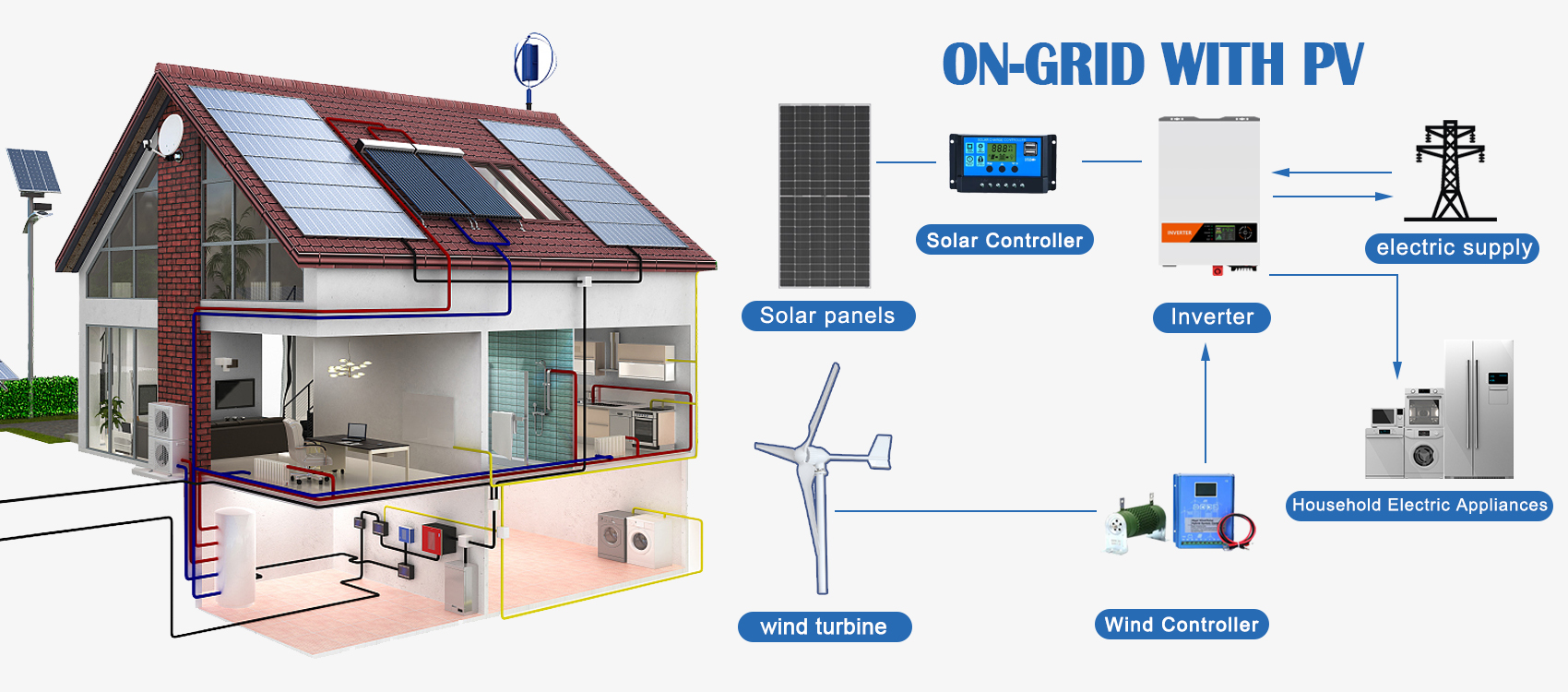Introduction
The transition towards renewable energy has been accelerated by the urgent need to combat climate change and reduce dependency on fossil fuels. Among various renewable sources, wind energy has emerged as a leading contender, particularly through the deployment of grid-connected wind turbine systems. This article aims to explore the operation modes of wind turbines when integrated with power grids, shedding light on their functionality, advantages, and the challenges they face.
Understanding Wind Turbine Systems
Before diving into operational modes, it is essential to understand the fundamental aspects of wind turbines. These machines convert kinetic energy from the wind into mechanical energy, which is then transformed into electrical energy. The core components of a wind turbine include:
- Blades: Designed to harness wind energy and convert it into rotational motion.
- Nacelle: Contains the generator, gearbox, and electronic controls.
- Tower: Elevates the nacelle and blades to capture stronger winds at higher altitudes.
- Control System: Manages the turbine’s performance and optimizes energy production.
Types of Wind Turbines
Wind turbines can be broadly categorized into two types:
- Horizontal Axis Wind Turbines (HAWT): The most commonly used design, known for high efficiency and adaptability to varying wind conditions.
- Vertical Axis Wind Turbines (VAWT): Less common, typically used in specific applications or smaller-scale projects.
The Importance of Grid Connection
Grid-connected wind turbine systems are vital for integrating wind energy into the electricity grid. This connection allows for:
- Energy Export: Excess energy generated by wind turbines can be fed back into the grid, providing a reliable energy source.
- Stability and Reliability: Wind turbines contribute to grid stability, especially during peak demand periods.
- Economic Benefits: Grid connection enables operators to sell surplus electricity, enhancing the economic viability of wind projects.
Operational Modes of Grid-Connected Wind Turbines
Wind turbines operate in various modes when connected to the grid, each tailored to specific grid conditions and operational needs.
1. Grid Following Mode
In the grid following mode, the wind turbine adjusts its output to match the frequency and voltage of the grid. This mode is essential for maintaining grid stability and ensuring that the generated electricity meets the required standards.
Key Characteristics:
- Active Power Regulation: The turbine continuously monitors grid conditions and adjusts its output accordingly.
- Reactive Power Support: Provides reactive power to maintain voltage levels within the grid.
2. Grid Forming Mode
The grid forming mode allows wind turbines to operate independently of the grid, creating a stable voltage and frequency. This mode is particularly useful in isolated systems or areas with weak grid infrastructure.
Key Characteristics:
- Autonomous Functioning: Capable of supplying power to local loads without relying on the grid.
- Frequency and Voltage Management: Actively controls output to ensure a stable supply.
3. Hybrid Mode
Hybrid mode combines the features of both grid following and grid forming modes, allowing for flexible operation based on real-time requirements. This adaptability enhances the overall reliability of grid-connected wind turbine systems.
Key Characteristics:
- Seamless Transition: The turbine can shift between operational modes depending on grid conditions.
- Improved Stability: Provides robust support for grid stability during fluctuations in demand or supply.
Benefits of Grid-Connected Wind Turbines
Integrating wind turbines into the grid offers numerous advantages, including:
1. Environmental Sustainability
By harnessing wind energy, grid-connected wind turbine systems significantly reduce greenhouse gas emissions, contributing to a cleaner environment and a sustainable energy future.
2. Economic Growth
Investments in wind energy create jobs, stimulate local economies, and promote energy independence, making it a crucial component of modern energy strategies.
3. Energy Security
Diverse energy sources enhance grid reliability, reducing the risk of outages and improving overall energy security.

Challenges Facing Grid-Connected Wind Turbines
Despite their advantages, there are several challenges associated with wind turbine systems connected to the grid:
1. Grid Integration Challenges
The variability of wind energy can lead to fluctuations in power output, necessitating advanced management techniques to ensure stable supply and demand balance.
2. Regulatory Framework
Existing regulations may not fully accommodate the unique characteristics of wind energy, hindering investment and development. Clear policies are essential to foster growth in this sector.
3. Technological Barriers
Ongoing research and development are crucial to improving the efficiency and reliability of grid-connected wind turbine systems. Innovations in materials, control technologies, and energy storage will enhance their performance.
Future Trends in Wind Energy
The future of wind energy looks promising, with several trends shaping its development:
1. Smart Grid Technology
Integrating smart grid solutions will enhance the ability of wind turbine systems to interact with the grid, optimizing energy distribution and consumption.
2. Enhanced Energy Storage
Advancements in energy storage technologies will allow for better management of wind energy variability, ensuring a steady supply even when wind conditions fluctuate.
3. Global Collaboration
International partnerships and knowledge sharing will accelerate the deployment of wind energy solutions, facilitating a global transition to sustainable energy sources.
Conclusion
The analysis of grid-connected wind turbine systems highlights their pivotal role in advancing renewable energy practices. Understanding the various operational modes and their implications is crucial for stakeholders aiming to optimize the efficiency and reliability of wind power integration. As technology continues to evolve and new challenges emerge, the future of wind energy remains bright, paving the way for a more sustainable and resilient energy landscape.

